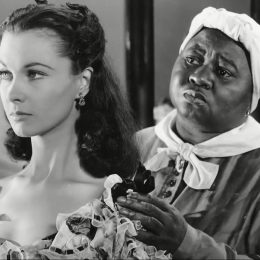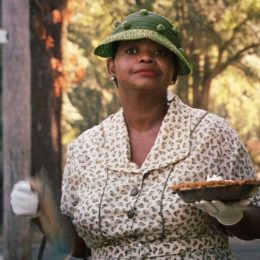On Tuesday, Feb. 9, MAAC held a dinner and discussion featuring Eugene Haynes, a professor of Race and Ethnicity in Mass Media and Film at Temple University. This event was one of a monthly dinner and discussion held by the club throughout the spring semester. The topic of discussion for February was Black representation in film.
Starting with a video on the history of anti-Black stereotypes, the event discussed historic and present

day caricatures of Black people, and its impact on social and political events. The video unpacked the three main groups of Black stereotypes (content servitude, unintelligence, and animalistic or hypersexuality) before delving into how these stereotypes have been manifested through gender roles.
For Black women, I learned, these three main stereotypes can be seen in the “Mammy” caricature, depicting a Black woman content with caring for their white master’s family and destined to suffer in silence, and the “Jezebel” or “Sapphire” caricature, which shows Black women as hyper-sexual. These stereotypes, though originating in the 1700s, are still around today with slight variations, such as the “angry Black woman” stereotype.
Additionally, showing Black women in film as hypersexual has contributed the to higher rates of sexual assault on Black women than their counterparts.
For Black men, these stereotypes are manifested as an “Uncle

Tom,” “sambo,” or hyper-aggressive caricatures. These stereotypes feed into the racist belief that Black people are more aggressive and dangerous, and were used as a justification for the subjugation of an entire racial group. Today, these caricatures are manifested in higher rates of police brutality on Black men and can be attributed to both conscious prejudice and implicit bias over hundreds of years of stereotyping.
The video drew a clear connection between harmful stereotyping of Black people in film as violent, hyper-sexual, and unintelligent, and higher rates of police brutality, sexual assault, and workplace discrimination in the real world.
These stereotypes are often referenced by politicians who are “tough on crime,” through depicting Black majority communities as needing greater, more violent policing, and warning of the “welfare queen” to revoke social benefits from the Black community. Further, these stereotypes often contribute to inequality in the healthcare industry where Black people are assumed to have a lower pain tolerance.
This event made clear that representing Black people as one-dimensional in film has implications beyond the screen. These caricatures were carefully crafted to uphold slavery and portray Black people as unfit for society. Additionally, these stereotypes continue to be used today and have real impacts on our society.
